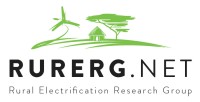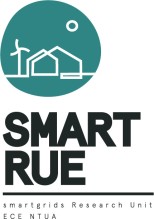During November 2017, the Rural Electrification Research Group of the NTUA along with the School of the Earth ‘Nea Guinea‘ from Greece, joined the Nepalese organizations Kathmandu Alternative Power and Energy Group (KAPEG) and People, Energy & Environment Development Association (PEEDA) in order to realize capacity building and knowledge exchange project for the use of locally manufactured small wind turbines in off-grid hybrid PV/wind systems. The project was part of a knowledge exchange activity founded by the Wuppertal Institute for Climate, Environment and Energy (WISIONS) under the title ‘On-line Design Tools Locally Manufactured Small Wind Turbines’. The aim of the project was the use of the open source OpenAFPM design tools developed by RurERG in order to strengthen the knowledge base of local practitioners working with PV/Wind hybrid systems in Nepal.
The aims of the project were achieved with both theoretical and practical courses on the PV/Wind hybrid systems, along with an electrification project in a rural community in the Palpa District of Southwest Nepal. The capacity building and knowledge exchange project started with a two-day course on Hybrid System Design in Kathmandu, during which all aspects of off-grid hybrid system operation were analyzed and practical examples were presented and conducted with the participants. In addition, all aspects of small wind turbine operation and design were presented, and the OpenAFPM online tools were used to design a small wind turbine using locally available materials, such as Ferrite magnets for the generator.
This design exercise then lead up to a five-day construction course in cooperation with Kathmandu University, during which the small wind turbine was constructed. A total of 25 people participated in the construction course that followed in Kathmandu university, including 15 students (graduates and undergraduates) from 3 different educational institutions of the country and 10 participants from different organizations, such as renewable energy companies and NGO’s. The practical sessions were organized in three working groups, and lead up to the completion of a Ferrite magnet 2.4m rotor diameter wind turbine in five days. The woodworking group carved the three blades of the rotor out of wood, the metalworking group fabricated the steel frame of the generator and the furling tail system, and the generator manufacturing group winded the coils of the stator and fabricated the magnet rotor disks. Photos of the construction process can be seen here.








